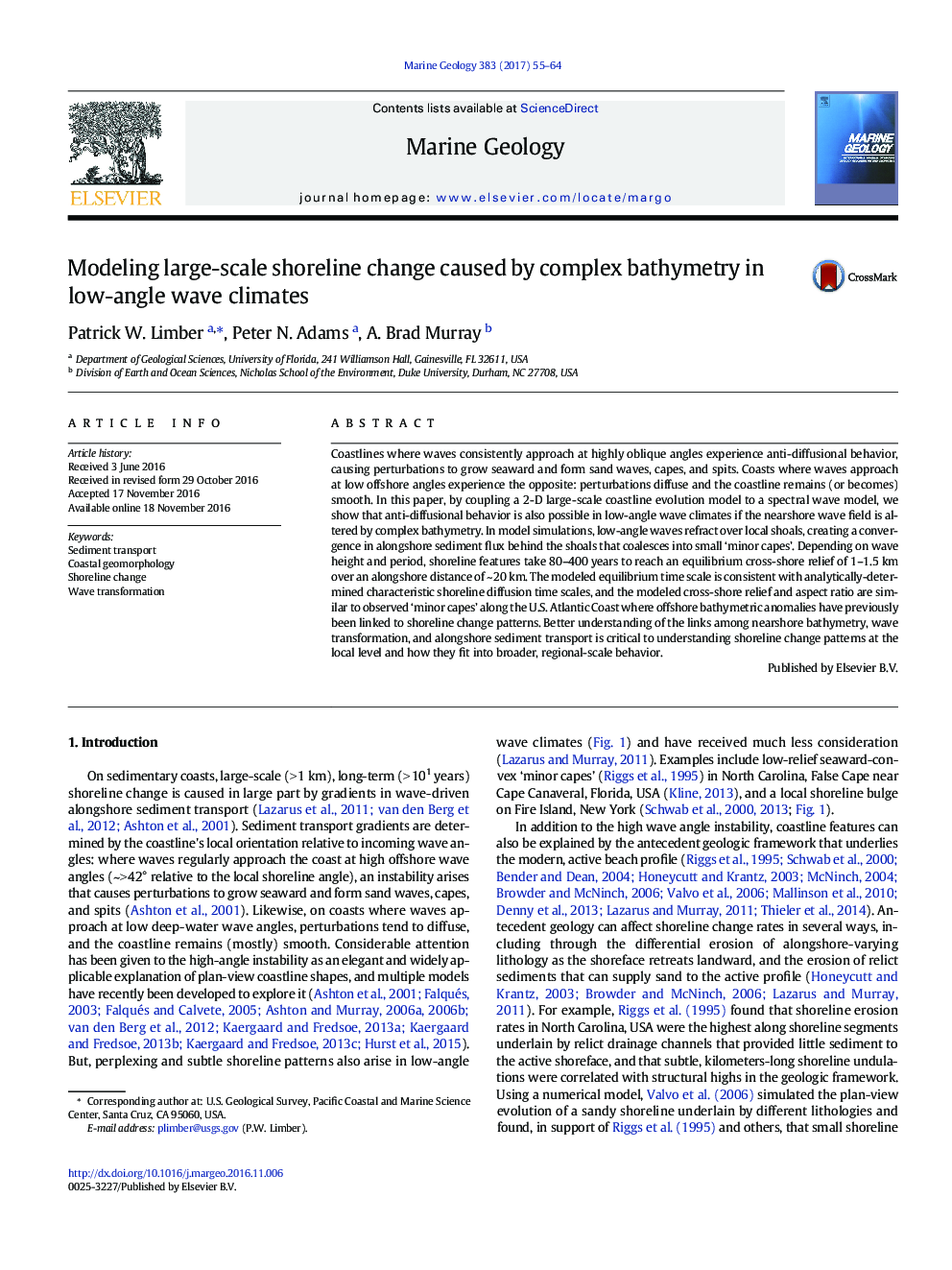| Article ID | Journal | Published Year | Pages | File Type |
|---|---|---|---|---|
| 5784453 | Marine Geology | 2017 | 10 Pages |
Abstract
Coastlines where waves consistently approach at highly oblique angles experience anti-diffusional behavior, causing perturbations to grow seaward and form sand waves, capes, and spits. Coasts where waves approach at low offshore angles experience the opposite: perturbations diffuse and the coastline remains (or becomes) smooth. In this paper, by coupling a 2-D large-scale coastline evolution model to a spectral wave model, we show that anti-diffusional behavior is also possible in low-angle wave climates if the nearshore wave field is altered by complex bathymetry. In model simulations, low-angle waves refract over local shoals, creating a convergence in alongshore sediment flux behind the shoals that coalesces into small 'minor capes'. Depending on wave height and period, shoreline features take 80-400Â years to reach an equilibrium cross-shore relief of 1-1.5Â km over an alongshore distance of ~Â 20Â km. The modeled equilibrium time scale is consistent with analytically-determined characteristic shoreline diffusion time scales, and the modeled cross-shore relief and aspect ratio are similar to observed 'minor capes' along the U.S. Atlantic Coast where offshore bathymetric anomalies have previously been linked to shoreline change patterns. Better understanding of the links among nearshore bathymetry, wave transformation, and alongshore sediment transport is critical to understanding shoreline change patterns at the local level and how they fit into broader, regional-scale behavior.
Related Topics
Physical Sciences and Engineering
Earth and Planetary Sciences
Geochemistry and Petrology
Authors
Patrick W. Limber, Peter N. Adams, A. Brad Murray,
